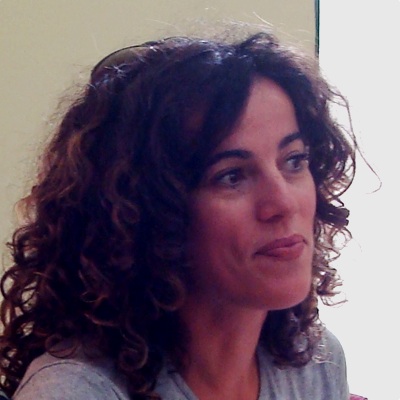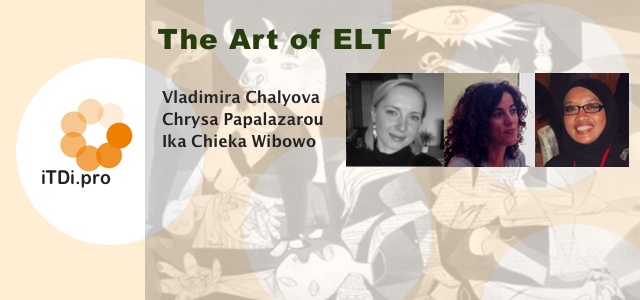Art in Education or The Art of Education
Vladimira Chalyova

“If art is to nourish the roots of our culture, society must set the artist free to follow his vision wherever it takes him.” – John F. Kennedy
When I was first asked to write a post about this topic, I was told that I am the right person to write about art and colours. Sure, after a couple of presentations and articles on Colours in the Classroom, people started associating me with this topic. However, I got sort of annoyed hearing that. My first reaction was that I won’t be writing about colours. In my understanding, art is much more than that and art in education, just like in real life, is anything but predictable!
Art, just as much as learning, should never be about the outcome. After all, who can tell when the learning stops? As a teacher, I feel more like a student than ever before.
“Art is not a thing — it is a way.”
Elbert Hubbard
If education is to nourish the roots of our culture, teachers must set the students free to follow their learning wherever it takes them.
We, as teachers, need to let go of our need to predict the outcome of our teaching.
So how can we teach without being too attached to the results of our work? How can we turn a nicely organized classwork into a life reflecting art that goes beyond the lesson plan?
First of all, we need to get comfortable with the diversity of results we might get and the direction our students may choose along the way.
This is the art of education, providing our students with tools and guidance as they try them without insisting on the way we would choose for them, no matter how noble our intention is.
“Creativity is allowing yourself to make mistakes. Art is knowing which ones to keep.”
Scott Adams
Let’s also not forget how art itself is defined – “a superior skill that you can learn by study and practice and observation.”
Here is how we can create an atmosphere where students’ artistic nature can thrive:
- When planning, pay extra attention to the first stage of a lesson. This is the time and place for you to provide tools – vocabulary, phrases, context, all the resources you may need later.
- Art, even abstract, is inevitably topical. Work within a topic but don’t hold on to it too tight if your students bring in another one. Nevertheless, discussion on its relevance is welcome at that point.
- Don’t expect lower level students to work as independently with “the tools” as the more experienced ones. However, encourage them in experimenting and allow mistakes.
- Mistakes should be approached as a learning/teaching material too. Don’t leave them unnoticed nor deal with them individually. It is important to find a way to use them comfortably within a group, even encourage students sharing them and discussing them.
- A curious mind is too busy to be anxious and organized enough to follow the inspiration towards creation. Always aim to tickle your students’ curiosity, be it in a classroom or at home.
- Even though I said the art is not about the outcome, the sense of achievement is very important for almost everyone and we should not ignore it. Despite the fact, consider the outcome just another ripple in the waters of learning and don’t stop there.
- Ask questions, always! Not the checking sort of questions but rather provoking, curious ones. Remember, you can’t give what you don’t have so cultivating your own curiosity is essential.
- How can you cultivate your own or your students’ curiosity? First of all, approach whatever is presented to you with a question of interest rather than judgment. Second, don’t fall for definitions you are given. Next, don’t worry if you don’t have opinion on some issue or answers to questions you are asked. Not having one signifies growth rather than lack of capacity.
“Art is not, as the metaphysicians say, the manifestation of some mysterious idea of beauty or God; it is not, as the aesthetical physiologists say, a game in which man lets off his excess of stored-up energy; it is not the expression of man’s emotions by external signs; it is not the production of pleasing objects; and, above all, it is not pleasure; but it is a means of union among men, joining them together in the same feelings, and indispensable for the life and progress toward well-being of individuals and of humanity.” – Leo Tolstoy
As critical thinking is not the same as criticism, taking an individual path of learning is not necessarily an individual work. In classrooms especially, we are given a chance to work towards union of individualities learning from and with each other.
Some may choose a different approach, a new way and some may have a unique outcome. And that’s the art of education: The diversity in which we use the tools of a language towards the same goal: communication.
Connect with Vladimira and other iTDi Associates, Mentors, and Faculty by joining iTDi Community. Sign Up For A Free iTDi Account to create your profile and get immediate access to our social forums and trial lessons from our English For Teachers and Teacher Development courses.


















